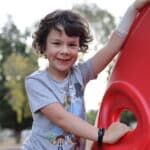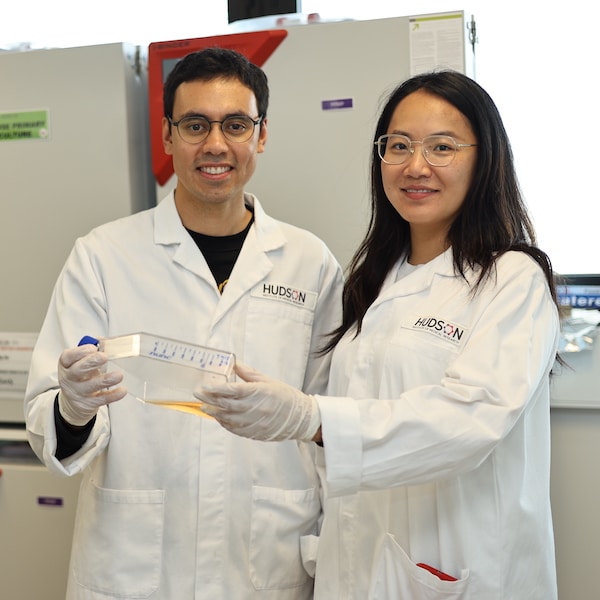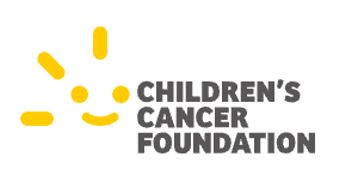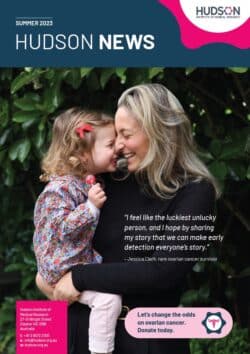Curing childhood cancer: all roads lead to Melbourne
A single laboratory in south-east Melbourne is now the global hub for medical researchers looking to cure childhood cancer. Located at Hudson Institute of Medical Research, the laboratory contains the Childhood Cancer Model Atlas (CCMA), the world’s largest collection of high-risk paediatric cancer cell lines, providing a unique, open-source facility to cancer researchers worldwide.
The story of the CCMA features in the latest edition of prestigious scientific journal, Cancer Cell.
This resource was developed thanks to generous funding from the Children’s Cancer Foundation, and active collaborations with 34 cancer research institutes, universities and academic medical centres. It is now available for every paediatric oncologist and childhood cancer researcher worldwide.
Childhood Cancer Model Atlas – global scientific hub
Co-leader of the Victorian Paediatric Cancer Consortium (VPCC) Precision Medicine Program, Professor Ron Firestein, says there is a desperate need to find new treatments and cures for the cancers that affect children.
Childhood cancer facts
- One in five children diagnosed with cancer will not survive.
- Most of those who do will suffer long-term disability from the toxic treatments.
- Cancer remains the leading disease-related cause of death among Australian children.
- Despite many years of research, survival rates from some cancers have hardly improved.
- In the last four decades, 500 drugs for adult cancers were approved in the US, but only 12 were approved to treat childhood cancers.
“Paediatric cancers are quite unique from adult cancers, so we don’t necessarily expect the same drug that works in adult cancers to work in children,” said Dr Paul Daniel, who along with Dr Claire Sun was lead author on this research paper.
“The CCMA is a collection of over 300 childhood cancer cell lines which offers us an opportunity to identify new therapies and biomarkers of response for paediatric cancers of greatest unmet medical need,” Dr Daniel said.
Fellow researcher Dr Sun had the job of compiling, collating and condensing huge amounts of data, as the team performed hundreds of tests on each tumour type: “Children’s cancers make up only about one per cent of all diagnosed cancers, so the pharmaceutical industry tends not to invest in finding new treatments,” she said.
Curing childhood cancers
“Having models (samples) of various childhood cancers is the only way that we can study the disease and understand how it develops, what makes it grow and ultimately what treatments can be used to fight it off and hopefully cure it,” Dr Sun said.
Childhood cancer – a mother’s story

Luca Boggia went from being an active 3-year-old to needing extensive brain surgery in a matter of weeks, due to what turned out to be an extremely rare cancerous tumour. Eleven rounds of chemotherapy and 33 consecutive days of radiotherapy later, he was on his way back to health.
Luca has just had his eighth birthday and his mother Monique says he’s thriving. She’s thankful for the opportunity to donate tumour tissue and hopeful the next family that finds itself in the same position has an easier time of it.
Professor David Eisenstat, Head of the Children’s Cancer Centre at Melbourne’s Royal Children’s Hospital and Group Leader, Neuro-Oncology at the Murdoch Children’s Research Institute, said: “Drs Sun, Daniel and Professor Firestein have addressed the urgent need to develop a childhood cancer cell line resource to identify specific cancer vulnerabilities towards improving targeted therapies for paediatric solid and central nervous system tumours. Their work also provides important insights into new targets of clinical relevance for paediatric focused cancer drug development.”
Assistant Professor of Paediatrics at Harvard Medical School, Dr Mimi Bandopadhayay agrees: “Understanding the vulnerabilities of paediatric tumours is essential to help identify new therapeutic approaches. This work is a tour de force that includes the largest collection of brain tumour models, generating a resource that will be invaluable to researchers across the world.”
The CCMA is the outcome of seven years of support and more than $7 million in funding from the Children’s Cancer Foundation. It was developed through active collaborations with 34 cancer research institutes, including Stanford University (USA), the University of California (San Francisco, USA), The Hospital for Sick Children (Canada), Johns Hopkins University (USA), McGill University (Canada), the Institute of Cancer Research (UK), and Hopp Children’s Cancer Center Heidelberg (Germany).
The CCMA also benefited from the support of the Australian Government’s Medical Research Future Fund and the Robert Connor Dawes Foundation.
Contact us
Hudson Institute communications
t: + 61 3 8572 2761
e: communications@hudson.org.au




